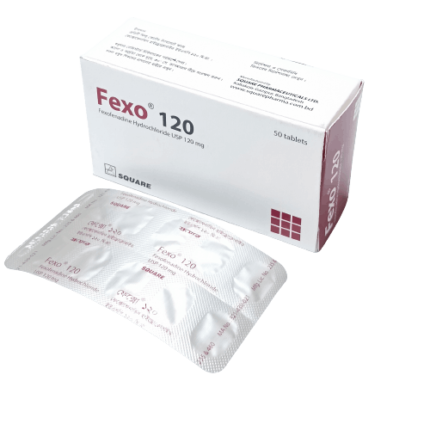Paloset 0.5
200.00৳ Strip
- Paloset: A powerful anti-emetic medication designed for nausea and vomiting management.
- Contains palonosetron, which selectively targets serotonin receptors for effective symptom relief.
- Ideal for various conditions including chemotherapy, radiotherapy, and post-operative nausea and vomiting.
- Available in both oral and intravenous formulations, offering flexibility in dosing for adults and children.
- Ensures precise symptom control and improved quality of life with its potent action.
 Brand
Brand
|
Square Pharmaceuticals PLC |
|---|---|
 Generics
Generics
|
Palonosetron |
Indications
Paloset is indicated for various conditions including:
- Management of acute and delayed nausea and vomiting
- Control of uncontrolled nausea and vomiting
- Chemotherapy-induced nausea and vomiting (CINV), both acute (occurring on the day of chemotherapy treatment) and delayed (occurring days later)
- Radiotherapy-induced nausea and vomiting (RINV)
- Post-operative and post-discharge nausea and vomiting (PONV & PDNV).
Pharmacology
Palonosetron, a potent 5-HT3 receptor antagonist, selectively binds to these receptors, inhibiting the actions of serotonin associated with nausea and vomiting. It primarily works in the small intestine and possibly in the brain. Chemotherapeutic agents trigger the release of serotonin, activating 5-HT3 receptors in the periphery and centrally in the chemoreceptor trigger zone, leading to the initiation of the vomiting reflex. Postoperative nausea and vomiting involve multiple factors and neuronal events, with the 5-HT3 receptor playing a key role.
Pharmacokinetics
Palonosetron demonstrates linear dose-proportional pharmacokinetics. It has a volume of distribution of approximately 6.9-7.9 L/kg and a longer half-life (40 hours). Metabolism occurs primarily via the liver and kidneys, with approximately 40% of the drug excreted unchanged in the urine. Total body clearance is 160±35 ml/h/kg, and renal clearance is 66.5±18.2 ml/h/kg.
Dosage & Administration
- For adults: The usual dosage for tablets is 0.5 mg daily, while for IV administration, a single dose of 0.075 mg should be given over 10 seconds.
- For chemotherapy-induced nausea and vomiting: Tablets should be administered 1 hour before chemotherapy, and IV doses should be given 30 minutes prior to treatment.
- For radiotherapy-induced nausea and vomiting: IV doses of 0.25 mg should be given 30 minutes before each week of radiation.
- For post-operative nausea and vomiting: A single IV dose of 0.075 mg should be given immediately before anesthesia induction.
- For children (1 month to 17 years): A single IV dose at 20 mcg/kg body weight, with a maximum dose of 1.5 mg.
Interactions
Paloset has been safely administered with various medications, including corticosteroids, analgesics, and antiemetics. It does not inhibit the antitumor activity of certain chemotherapeutic agents, nor does it have significant pharmacokinetic interactions with metoclopramide. In vitro studies suggest a low potential for clinically significant drug interactions.
Contraindications
Palonosetron is contraindicated in patients with known hypersensitivity to the drug or any of its components.
Side Effects
The most common adverse reactions include headaches and constipation.
Pregnancy & Lactation
Palonosetron is classified as pregnancy category ‘B’, and its excretion in breast milk is not known.
Use in Special Populations
No dosage adjustments are recommended for elderly patients (>65 years), children (1 month to 10 years), or patients with impaired renal and hepatic function.
Overdose Effects
There is no known antidote to Paloset overdose, and management should focus on supportive care.
Therapeutic Class
Paloset belongs to the therapeutic class of anti-emetic drugs.
Storage Conditions
Store Paloset in a cool, dry place, protected from light.













Reviews
There are no reviews yet.